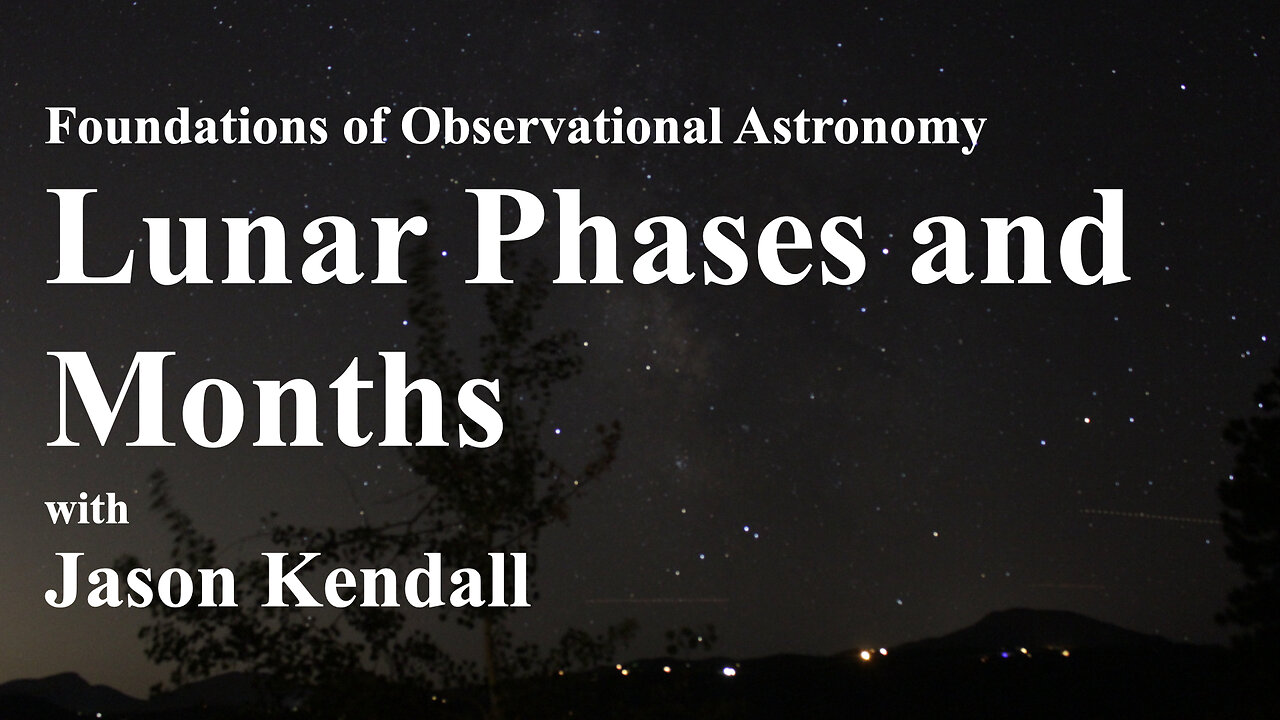Premium Only Content

Understanding the Moon: Tidal Locking and Lunar Phases
Have you ever observed that we consistently see only one side of the moon? This phenomenon occurs because the moon’s rotational period is synchronized with its period of revolution around the Earth. This synchronization, known as tidal locking, ensures that the moon rotates at the same rate at which it orbits, thereby always presenting the same face to our planet. Let us explore the various phases of the moon, which include the waxing crescent, first quarter, waxing gibbous, full moon, waning gibbous, third quarter, and waning crescent, ultimately culminating in the new moon. The new moon is a phase that occurs when the moon is positioned in alignment with the sun, rendering it invisible from the perspective of Earth. The alignment of the moon’s rotation and orbit is responsible for these distinct phases. An illustrative diagram depicting the moon and Earth demonstrates that, were the moon not to rotate, we would witness different facets of its surface. However, due to the effect of tidal locking, the same side consistently faces the Earth as the moon completes its orbit. To comprehend lunar cycles, it is essential to differentiate between two types of months: the sidereal month, which lasts approximately 27.32 days and is based on the moon’s position relative to distant stars, and the synodic month, which spans about 29.53 days and measures the time from one new moon to the next. The synodic month is particularly relevant for observing the moon’s phases. Additional lunar phenomena include supermoons and micromoons, which are determined by the moon’s elliptical orbit. A supermoon occurs when the moon is at its closest proximity to the Earth, resulting in an appearance that is slightly larger than usual, whereas a micromoon is observed when the moon is at its farthest point. There are other classifications of lunar months, such as the tropical month (measuring from equinox to equinox), the anomalistic month (from perigee to perigee), and the draconic month (from node to node). Each of these measurements corresponds to different aspects of the moon’s orbital path. Contrary to a common misconception, the phases of the moon are not produced by the Earth’s shadow; rather, they are the result of the spatial relationships among the Earth, moon, and sun. A comprehensive understanding of these lunar dynamics elucidates the moon’s consistent appearance and the fascinating variations observed throughout each month.
-
 1:08:45
1:08:45
DeVory Darkins
21 hours agoLetitia James drops frantic speech after pleading not guilty as Canada gets NIGHTMARE NEWS
96.7K46 -
 1:25:16
1:25:16
efenigson
2 days agoDigital Money or Digital Prison? - Nick Anthony | You're The Voice - LIVE from Lugano PlanB Forum!
19.8K3 -
 13:26
13:26
Cash Jordan
17 hours ago“PORTLAND MOB” Storms ICE HQ… ‘COMBAT’ Troops Respond With EXTREME FORCE
20.2K53 -
 16:00
16:00
Demons Row
14 hours ago $9.49 earnedBIKERS OF FLORIDA 💀🏍️ Outlaws, Warlocks, Mongols & the Wild South
19.8K10 -
 22:01
22:01
Jasmin Laine
18 hours agoTrump’s BRUTAL WARNING Leaves Canada Speechless—America STUNNED
18.6K61 -
 11:42
11:42
China Uncensored
19 hours agoThe Chinese Military Turns Its Gun on Xi Jinping
20.4K29 -
 2:36
2:36
The Official Steve Harvey
18 hours ago $3.87 earnedThis Is Bigger Than Comedy — It’s About Saving Young Men
16.1K3 -
 8:09
8:09
Hollywood Exposed
21 hours agoMatthew McConaughey EXPOSES The Real Reason He Left Hollywood
19.5K14 -
 29:38
29:38
Stephan Livera
2 days ago $8.03 earnedDay 2 - Stephan Livera hosts Plan B Podcast in Lugano
19.7K2 -
 1:01:47
1:01:47
vivafrei
20 hours agoLive from Lugano Plan B in Switzerland w/ Efrat Fenigson and Prince Filip Karađorđević!
65.7K7